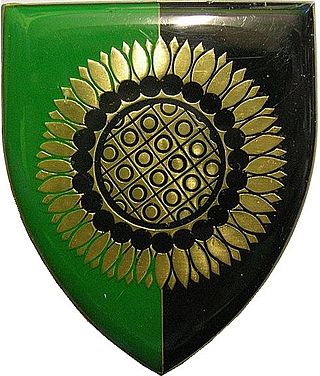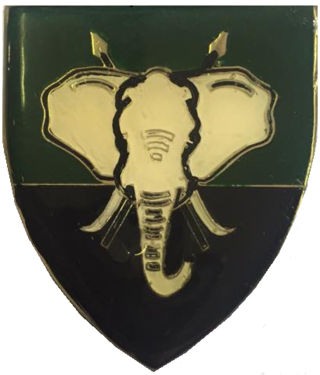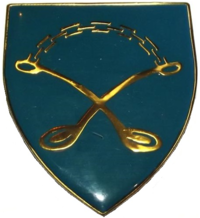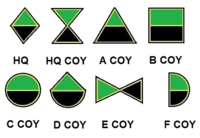
The South African Army is the principal land warfare force of South Africa, a part of the South African National Defence Force (SANDF), along with the South African Air Force, South African Navy and South African Military Health Service. The Army is commanded by the Chief of the Army, who is subordinate to the Chief of the SANDF.

The South African Special Forces Brigade, colloquially known as the Recces, is South Africa's principal special operations unit, specialising in various types of operations, including counter-insurgency, long-range-reconnaissance, unconventional-warfare, special operations, hostage-rescue, and direct-action operations. The brigade operates with two active-duty groups, with 4 Special Forces Regiment focusing on maritime operations, and 5 Special Forces Regiment focusing on land and airborne operations. Only about 8% of recruits who undergo South African special forces training pass the course.

The South African National Defence Force (SANDF) comprises the armed forces of South Africa. The commander of the SANDF is appointed by the President of South Africa from one of the armed services. They are in turn accountable to the Minister of Defence and Military Veterans of the Defence Department.

The South African Army Infantry Formation supervises all infantry within the South African Army.

The General Botha Regiment is a reserve infantry regiment of the South African Army. The Regiment was named after General Louis Botha, the first prime minister of South Africa.

Lohatla is a training area of the South African National Defence Force. It is located in the Northern Cape province of South Africa and is home to the SA Army Combat Training Centre, which is part of the South African Army Training Formation.

The 2nd Health Brigade (2HB) is an Australian Army brigade. The 2nd Brigade was formed in 1903 as a militia infantry formation based in Victoria, the brigade later served during the First World War as part of the Australian Imperial Force, allocated to the 1st Division. During the war, the 2nd Brigade took part in the fighting at Gallipoli, including the Battle of Krithia where it lost almost a third of its strength. Later they took part in the Battle of Lone Pine before being withdrawn back to Egypt in December 1915. Following this the brigade was transferred to the Western Front in France and Belgium where, between March 1916 and the armistice in November 1918, they took part in most of the major Allied operations.

7 South African Infantry Battalion is a motorised infantry unit of the South African Army.

21 South African Infantry Battalion is an infantry battalion of the South African Army. The unit has its origin as 21 Battalion, an apartheid era unit used to train black South African men as soldiers.

Natal Command was a Command of the South African Army. It was headquartered in Durban, South Africa. By the 1980s, it was responsible for the security of the region, forming the primary level of command for military operations in support of the Police. It also provided logistic, administrative and service support to units and formations operating in its area of responsibility.

15 South African Infantry Battalion is a motorised infantry unit of the South African Army.

7 South African Infantry Division was a formation of the South African Army, active from the 1960s to 1999.

The OR Tambo Regiment is a reserve infantry regiment of the South African Army.

111 Battalion was a motorised infantry unit of the South African Army.

116 Battalion was a motorised infantry unit of the South African Army.

151 South African Infantry Battalion was a motorised infantry unit of the South African Army.

111 Battalion was a motorised infantry unit of the South African Army.

115 South African Infantry Battalion was a motorised infantry unit of the South African Army.

118 South African Infantry Battalion was a motorised infantry unit of the South African Army.

The Bophuthatswana Defence Force was established on 6 December 1977 from trainees of the South African Defence Force. It was the defence force of the Republic of Bophuthatswana, a nominally independent bantustan during the Apartheid era of South Africa.

























